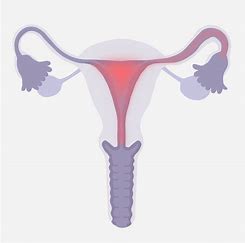Pelvic Inflammatory Disease (PID) is a general term used to describe an infection of the female reproductive organs, which include the uterus, fallopian tubes, and ovaries. It typically happens when bacteria move from the vagina or cervix to the upper genital canal. This infection can cause inflammation, scarring, and reproductive organ damage, which can result in long-term health issues such as chronic pelvic pain, infertility, and ectopic pregnancy.
PID is commonly associated with sexually transmitted infections (STIs), although it can also occur as a result of other illnesses or medical treatments. The disease can cause a wide range of symptoms, from minor discomfort to severe pain, and it can also be asymptomatic.
MUST READ;6 Reasons Why You Should Eat Garden Egg Sauce
Symptoms of PID
The symptoms of Pelvic Inflammatory Disease (PID) can vary in intensity, ranging from mild to severe, and some women may not experience any symptoms at all, making the condition difficult to detect early. Common signs include lower abdominal pain, which is often the most prominent symptom, along with unusual vaginal discharge that may have a foul odor. Other symptoms can include pain during intercourse, painful urination, irregular menstrual bleeding, and fever with chills. In some cases, women may experience nausea and vomiting. Because the symptoms of PID can mimic other conditions, it’s important for women who experience these signs to seek medical attention promptly for proper diagnosis and treatment.
Causes of PID
Pelvic Inflammatory Disease (PID) is typically caused by bacterial infections that spread to the female reproductive organs, although the underlying causes are numerous and complicated. Understanding the etiology of PID is critical for prevention and prompt treatment. While sexually transmitted diseases are the most prevalent cause, other types of infection, such as certain medical procedures and delivery, can also contribute to the development of PID. We will look at the numerous causes that can contribute to this potentially dangerous disease.
- Sexually Transmitted Infections: Gonorrhea and Chlamydia are the most frequent microorganisms that cause PID. They are sexually transmitted and can spread from the vagina to the reproductive organs if left untreated.
- Non-sexually transmitted bacteria: Normal Vaginal Flora: Bacteria that are typically found in the vagina (such as Gardnerella vaginalis or anaerobic bacteria) might migrate to the reproductive organs and cause PID, particularly after childbirth, miscarriage, or abortion.
- Medical procedures: The insertion of an IUD can bring bacteria into the uterus, resulting in PID, especially if suitable sterile techniques are not used. Dilation and Curettage (D&C) which is commonly performed after a miscarriage or for diagnostic purposes, can raise the risk of PID. Endometrial biopsy or hysteroscopy: Any invasive uterine procedure that introduces bacteria can potentially develop PID.
- Childbirth and abortion: Following childbirth or abortion, the reproductive system becomes more susceptible to infections, raising the risk of PID.
Treatment Options;
To avoid long-term problems including infertility and persistent pain, it is necessary to treat Pelvic Inflammatory Disease (PID) quickly and comprehensively. Antibiotics are the primary treatment for PID, however, surgical intervention may be required in severe instances. Addressing the infection early on, managing symptoms, and limiting future spread, are critical for a good recovery. Here are various treatment options to explore;
- Antibiotic therapy: The majority of PIDs are treated with a combination of broad-spectrum antibiotics given orally. Doxycycline, metronidazole, and ceftriaxone are some of the most commonly prescribed antibiotics. The treatment usually lasts 14 days. Intravenous (IV) antibiotics may require hospitalization in extreme situations. This is usually required if the patient has a high temperature, vomiting, or an abscess that needs to be drained.
- Surgical Intervention: If an abscess develops (such as a tubo-ovarian abscess), surgical drainage may be required. This can be accomplished by laparoscopy (minimally invasive surgery) or laparotomy (open surgery). In rare circumstances, severely damaged reproductive organs may need to be removed to control the infection.
- Pain Management: Nonsteroidal anti-inflammatory medicines (NSAIDs), such as ibuprofen, can aid with PID pain and inflammation.
In conclusion, early detection and treatment of Pelvic Inflammatory Disease (PID), a serious condition that can have long-term effects on a woman’s reproductive health, are crucial to preventing complications such as infertility, ectopic pregnancy, and chronic pelvic pain. Practicing safe sex, getting regular STI screenings, and seeking prompt medical care for any symptoms of infection are key to reducing the risk of PID. If you suspect you have PID or are at risk, you should consult with a healthcare provider to ensure proper diagnosis and treatment. It is critical to recognize that even if PID symptoms are mild or absent, the condition can cause significant damage to the reproductive organs. Therefore, awareness and preventive measures play a vital role in protecting your reproductive health.


